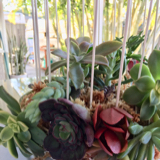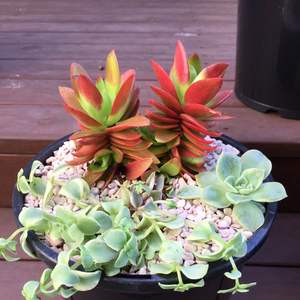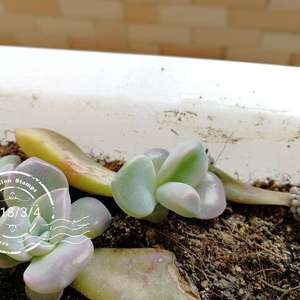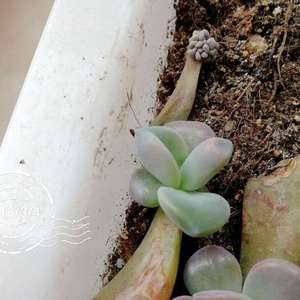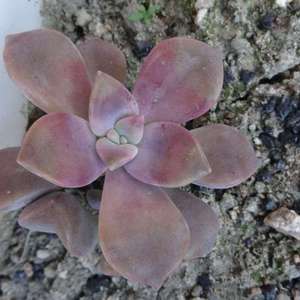文章
Miss Chen
2018年07月08日

Description: This herbaceous plant is a biennial or short-lived perennial that becomes 4-8' tall. The stout central stem is unbranched or sparingly branched; it is light green, terete, and more or less hairy. The blades of the alternate leaves are up to 8" long and across; they are palmately lobed (with 3-7 blunt lobes each) and crenate along their margins. Each leaf blade is orbicular or oval in outline and indented at the base where the petiole joins the blade. The upper surface of each leaf blade is medium green, slightly pubescent to hairless, and wrinkled from fine veins; the lower surface is light green and pubescent. The petioles of the leaves are as long or a little longer than their blades; they are light green and hairy.
The central stem terminates in a spike-like raceme of flowers; axillary flowers are produced from the axils of the upper leaves as well. These flowers occur individually or in small clusters along the central stem; they nod sideways from short hairy pedicels. Each flower spans about 3-5" when it is fully open; it has 5 petals, 5 sepals, 6-9 sepal-like bracts, and a columnar structure in the center with the reproductive organs (stamens toward the tip, thread-like stigmas below). The overlapping petals provide the flower with a funnelform shape; they are usually some shade of white, pink, or purplish red. The sepals are light green, ovate, and much smaller than the petals. The bracts of each flower are located underneath the sepals; they are light green, hairy, ovate, and joined together at the base. The blooming period occurs from mid-summer into the fall; a colony of plants will bloom for about 2 months. Each flower is replaced by a fruit containing a ring of 15-20 seeds (technically, a schizocarp). These seeds are oval, flattened, and notched on one side. The root system consists of a taproot. This plant spreads by reseeding itself.Central Stem & Flowerbud
Cultivation: The preference is full to partial sun, moist to mesic conditions, and a fertile loamy soil. Lower leaves will wither away during hot dry weather. Hollyhock is vulnerable to foliar disease, including rust.

Range & Habitat: The non-native Hollyhock occasionally escapes from cultivation, but it rarely persists. Escaped plants have been collected primarily in NE and east central Illinois (see Distribution Map). Habitats include areas along railroads, roadsides, vacant lots, and waste areas, especially in urban areas. Areas with a history of disturbance are preferred. Because of the showy flowers, Hollyhock is often cultivated in gardens. It is native to Eurasia.
Faunal Associations: The flowers are cross-pollinated by several kinds of bees. Various insects feed on the leaves and other parts of Hollyhock. These include caterpillars of Pyrgus communis (Common Checkered Skipper), caterpillars of the butterflies Vanessa cardui (Painted Lady) and Strymon melinus (Gray Hairstreak), and caterpillars of such moths as Acontia aprica (Exposed Bird-Dropping Moth), Anomis erosa (Yellow Scallop Moth), Autographa precationis (Common Looper Moth), Mamestra configurata (Bertha Armyworm), and Astrotischeria omissa (Bouseman et al., 2006; Wagner, 2005; Covell, 1984/2005; Needham et al., 1928). Other insects that feed on Hollyhock include both adults and larvae of Apion longirostre (Hollyhock Weevil), adults of Popillia japonica (Japanese Beetle), Acyrthosiphon malvae (Geranium Aphid) and Aphis gossypii (Cotton Aphid), Brooksetta althaeae (Hollyhock Plant Bug), and larvae of the flies Calycomyza malvae and Melanagromyza hicksi (Cranshaw, 2004; personal observation; Blackman & Eastop, 2013; Pepper, 1965; Knight, 1941; Spencer & Steyskal, 1986). The foliage is palatable to cattle and other hoofed mammalian herbivores.
Photographic Location: The photograph of the flower was taken at The Arboretum in Urbana, Illinois; the photographs of the stem and leaf were taken at a flower garden of the same city.

Comments: The meaning of the common name is probably 'Holy Mallow.' Hollyhock is one of the taller members of the Mallow family. It superficially resembles one of the native Hibiscus spp. (Rose Mallows), which are perennial wetland plants. Hollyhock differs in having floral bracts that are ovate, while a Rose Mallow has floral bracts that are narrowly linear. The structures of their fruits also differ: the fruit of Hollyhock consists of a ring of seeds, while the fruit of Rose Mallow is a 5-celled capsule. Some of the taller Malva spp. (Mallows) also resemble Hollyhock, but they have only 1-3 bracts per flower; Hollyhock has 6-9 bracts per flower. An alternative scientific name for this species is Althaea rosea.
The central stem terminates in a spike-like raceme of flowers; axillary flowers are produced from the axils of the upper leaves as well. These flowers occur individually or in small clusters along the central stem; they nod sideways from short hairy pedicels. Each flower spans about 3-5" when it is fully open; it has 5 petals, 5 sepals, 6-9 sepal-like bracts, and a columnar structure in the center with the reproductive organs (stamens toward the tip, thread-like stigmas below). The overlapping petals provide the flower with a funnelform shape; they are usually some shade of white, pink, or purplish red. The sepals are light green, ovate, and much smaller than the petals. The bracts of each flower are located underneath the sepals; they are light green, hairy, ovate, and joined together at the base. The blooming period occurs from mid-summer into the fall; a colony of plants will bloom for about 2 months. Each flower is replaced by a fruit containing a ring of 15-20 seeds (technically, a schizocarp). These seeds are oval, flattened, and notched on one side. The root system consists of a taproot. This plant spreads by reseeding itself.Central Stem & Flowerbud
Cultivation: The preference is full to partial sun, moist to mesic conditions, and a fertile loamy soil. Lower leaves will wither away during hot dry weather. Hollyhock is vulnerable to foliar disease, including rust.

Range & Habitat: The non-native Hollyhock occasionally escapes from cultivation, but it rarely persists. Escaped plants have been collected primarily in NE and east central Illinois (see Distribution Map). Habitats include areas along railroads, roadsides, vacant lots, and waste areas, especially in urban areas. Areas with a history of disturbance are preferred. Because of the showy flowers, Hollyhock is often cultivated in gardens. It is native to Eurasia.
Faunal Associations: The flowers are cross-pollinated by several kinds of bees. Various insects feed on the leaves and other parts of Hollyhock. These include caterpillars of Pyrgus communis (Common Checkered Skipper), caterpillars of the butterflies Vanessa cardui (Painted Lady) and Strymon melinus (Gray Hairstreak), and caterpillars of such moths as Acontia aprica (Exposed Bird-Dropping Moth), Anomis erosa (Yellow Scallop Moth), Autographa precationis (Common Looper Moth), Mamestra configurata (Bertha Armyworm), and Astrotischeria omissa (Bouseman et al., 2006; Wagner, 2005; Covell, 1984/2005; Needham et al., 1928). Other insects that feed on Hollyhock include both adults and larvae of Apion longirostre (Hollyhock Weevil), adults of Popillia japonica (Japanese Beetle), Acyrthosiphon malvae (Geranium Aphid) and Aphis gossypii (Cotton Aphid), Brooksetta althaeae (Hollyhock Plant Bug), and larvae of the flies Calycomyza malvae and Melanagromyza hicksi (Cranshaw, 2004; personal observation; Blackman & Eastop, 2013; Pepper, 1965; Knight, 1941; Spencer & Steyskal, 1986). The foliage is palatable to cattle and other hoofed mammalian herbivores.
Photographic Location: The photograph of the flower was taken at The Arboretum in Urbana, Illinois; the photographs of the stem and leaf were taken at a flower garden of the same city.

Comments: The meaning of the common name is probably 'Holy Mallow.' Hollyhock is one of the taller members of the Mallow family. It superficially resembles one of the native Hibiscus spp. (Rose Mallows), which are perennial wetland plants. Hollyhock differs in having floral bracts that are ovate, while a Rose Mallow has floral bracts that are narrowly linear. The structures of their fruits also differ: the fruit of Hollyhock consists of a ring of seeds, while the fruit of Rose Mallow is a 5-celled capsule. Some of the taller Malva spp. (Mallows) also resemble Hollyhock, but they have only 1-3 bracts per flower; Hollyhock has 6-9 bracts per flower. An alternative scientific name for this species is Althaea rosea.
0
0
文章
Miss Chen
2018年07月08日

Description: This herbaceous perennial plant is 4-12" tall and unbranched, consisting of a rosette of leaves and a flowering stalk. The basal leaves are up to 3" long and 1" across. They are evergreen or semi-evergreen, obovate (spoon-shaped), and nearly hairless. Their margins are crenate and slightly undulate. The flowering stalk is 4-angled and slightly pubescent or hairy. The opposite leaves along this stalk are similar to the basal leaves, except that they are smaller in size and ovate. The flowers occur in a whorled spike along the upper half of the leafy stalk. They are produced in abundance and densely distributed along this spike. Each tubular flower is about 1/2–2/3" (12-17 mm.) in length, consisting of a 2-lipped corolla and a green calyx with 5 teeth. The corolla is usually various shades of blue-violet, and less often pink or white. There are dark blue-violet lines that lead toward the throat of the corolla; they function as nectar guides. The upper lip of the corolla is truncated and very small, while the large lower lip has 3 rounded lobes. The middle lobe of the lower lip is notched at its tip and the largest in size. The outer surface of the corolla behind the lobes is conspicuously hairy; this causes the flower buds to appear hairy.
The blooming period occurs during the spring and lasts about 2-3 weeks. Each flower is replaced by 4 nutlets that are oval-shaped and pitted across the surface. The root system consists of a crown of fibrous roots. Green stolons up to 12" long are produced from the rosette of basal leaves. They are largely naked, except for a few small leaves that are narrowly ovate. These stolons often form new plantlets by rooting at their tips. Carpet Bugle can reproduce by seeds or vegetatively by means of these stolons; it often forms colonies.
Cultivation: The preference is partial sun, slightly moist to mesic conditions, and a fertile loamy soil that is somewhat acidic. If the soil is poorly drained and soggy, crown rot can develop and spread rapidly. In sandy soil, the roots are occasionally attacked by nematodes.

Range & Habitat: The non-native Carpet Bugle can escape from cultivation in gardens, but it is still uncommon in the wild, occurring in NE Illinois and Jackson County in southern Illinois (see Distribution Map). Habitats include partially shaded areas of lawns, edges of yards, partially shaded areas along foundations of buildings, nursery plots, and edges of woodlands. This plant is occasionally used as a ground cover because of its evergreen leaves and low spreading habit, but it is potentially invasive of natural areas. In Eurasia, where it is native, this plant occurs in partially shaded areas of deciduous woodlands, thickets, or meadows; the flowers bloom before the leaves of the trees have become fully developed.
Faunal Associations: The flowers are pollinated by bumblebees and other long-tongued bees. According to sources within the horticulture industry, the foliage is rarely bothered by rabbits and deer.

Photographic Location: The photographs were taken underneath a tree at Dave Monk's postage stamp prairie in Champaign, Illinois, and along the side of a house in NW Ohio.
Comments: Different cultivars of Carpet Bugle are available through the horticultural industry that can vary considerably in the color of their flowers and foliage. The only other Ajuga sp. that has naturalized in Illinois is Ajuga genevensis (Geneva Bugle). This species is slightly taller with stems and leaves that are more hairy than Carpet Bugle; it also doesn't produce stolons. Carpet Bugle is easy to distinguish from other members of the Mint family because of the following combination of features: 1) Its blue-violet flowers are ½" in length or slightly larger, 2) the upper lip of the corolla is truncated and quite short, 3) the flowers occur in a terminal whorled spike, 4) the flowers bloom during the spring on stalks that are 1' tall or less, and 5) above ground stolons are produced in abundance from the rosette of basal leaves. This latter characteristic is especially useful in identifying this species because very few members of the Mint family produce above-ground stolons.
The blooming period occurs during the spring and lasts about 2-3 weeks. Each flower is replaced by 4 nutlets that are oval-shaped and pitted across the surface. The root system consists of a crown of fibrous roots. Green stolons up to 12" long are produced from the rosette of basal leaves. They are largely naked, except for a few small leaves that are narrowly ovate. These stolons often form new plantlets by rooting at their tips. Carpet Bugle can reproduce by seeds or vegetatively by means of these stolons; it often forms colonies.
Cultivation: The preference is partial sun, slightly moist to mesic conditions, and a fertile loamy soil that is somewhat acidic. If the soil is poorly drained and soggy, crown rot can develop and spread rapidly. In sandy soil, the roots are occasionally attacked by nematodes.

Range & Habitat: The non-native Carpet Bugle can escape from cultivation in gardens, but it is still uncommon in the wild, occurring in NE Illinois and Jackson County in southern Illinois (see Distribution Map). Habitats include partially shaded areas of lawns, edges of yards, partially shaded areas along foundations of buildings, nursery plots, and edges of woodlands. This plant is occasionally used as a ground cover because of its evergreen leaves and low spreading habit, but it is potentially invasive of natural areas. In Eurasia, where it is native, this plant occurs in partially shaded areas of deciduous woodlands, thickets, or meadows; the flowers bloom before the leaves of the trees have become fully developed.
Faunal Associations: The flowers are pollinated by bumblebees and other long-tongued bees. According to sources within the horticulture industry, the foliage is rarely bothered by rabbits and deer.

Photographic Location: The photographs were taken underneath a tree at Dave Monk's postage stamp prairie in Champaign, Illinois, and along the side of a house in NW Ohio.
Comments: Different cultivars of Carpet Bugle are available through the horticultural industry that can vary considerably in the color of their flowers and foliage. The only other Ajuga sp. that has naturalized in Illinois is Ajuga genevensis (Geneva Bugle). This species is slightly taller with stems and leaves that are more hairy than Carpet Bugle; it also doesn't produce stolons. Carpet Bugle is easy to distinguish from other members of the Mint family because of the following combination of features: 1) Its blue-violet flowers are ½" in length or slightly larger, 2) the upper lip of the corolla is truncated and quite short, 3) the flowers occur in a terminal whorled spike, 4) the flowers bloom during the spring on stalks that are 1' tall or less, and 5) above ground stolons are produced in abundance from the rosette of basal leaves. This latter characteristic is especially useful in identifying this species because very few members of the Mint family produce above-ground stolons.
0
0
文章
Miss Chen
2018年07月05日

A ripe rind is one sign a butternut squash (Cucurbita moschata) is ready to pick, and there are other signs. An annual winter squash vine, butternut squash grows 3/4 to 1 1/2 feet tall with a vine 10 to 15 feet long. Creamy-white to orange-yellow flowers appear in late spring and orange-fleshed fruits develop, which ripen in fall. Changes in the vine and changes in the color and texture of the fruit are some signs to look for that tell you butternut squash is ready for harvesting.
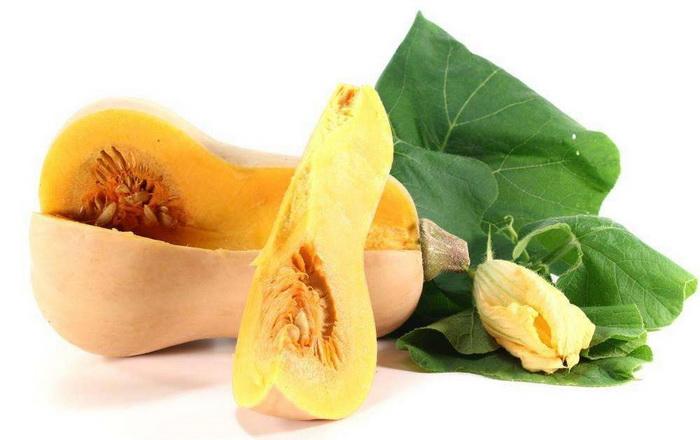
Days From Sowing
Providing severe weather conditions such as drought or prolonged cold temperatures don't occur, butternut squash fruits ripen a predictable number of days after sowing. In regular growing conditions, it takes 80 to 100 days after the seed was sown.
Drought stresses plants, and may speed up ripening. However, cold weather slows down butternut squash growth, and then fruit may ripen later than expected.
Vine Condition
When butternut squash fruits are ready for picking, the vine has done its job. It stops growing and begins to die back. If your butternut squash vine stops producing new shoots and leaves, and the existing leaves begin to yellow and wilt, the fruit is probably nearly ripe.
Skin Appearance
Butternut squash skin is light whitish-green, smooth and shiny while the fruit is growing. As they ripen, the fruits turn deep tan and become dull and dry.
Skin Texture
A change in skin texture is another sign of ripeness in butternut squash. Slightly soft when the fruit is growing, butternut squash skin becomes very tough when the fruit is ripe.
Harvest Time
When butternut squash fruit are ready to harvest, cut the stems with pruning shears or a sharp knife.

Cut the squash stems 1 inch from the fruit, and put them in a cool, dark, dry place. Don't allow the fruit to touch each other. Store the squash at 50 degrees Fahrenheit and 50 to 75 percent humidity and it will keep for two to three months. Check the fruit every one or two weeks, and remove and discard any that look diseased or have begun to decay.

Days From Sowing
Providing severe weather conditions such as drought or prolonged cold temperatures don't occur, butternut squash fruits ripen a predictable number of days after sowing. In regular growing conditions, it takes 80 to 100 days after the seed was sown.
Drought stresses plants, and may speed up ripening. However, cold weather slows down butternut squash growth, and then fruit may ripen later than expected.
Vine Condition
When butternut squash fruits are ready for picking, the vine has done its job. It stops growing and begins to die back. If your butternut squash vine stops producing new shoots and leaves, and the existing leaves begin to yellow and wilt, the fruit is probably nearly ripe.
Skin Appearance
Butternut squash skin is light whitish-green, smooth and shiny while the fruit is growing. As they ripen, the fruits turn deep tan and become dull and dry.
Skin Texture
A change in skin texture is another sign of ripeness in butternut squash. Slightly soft when the fruit is growing, butternut squash skin becomes very tough when the fruit is ripe.
Harvest Time
When butternut squash fruit are ready to harvest, cut the stems with pruning shears or a sharp knife.

Cut the squash stems 1 inch from the fruit, and put them in a cool, dark, dry place. Don't allow the fruit to touch each other. Store the squash at 50 degrees Fahrenheit and 50 to 75 percent humidity and it will keep for two to three months. Check the fruit every one or two weeks, and remove and discard any that look diseased or have begun to decay.
0
0
文章
Miss Chen
2018年07月03日

Description: This plant is a summer annual about 1–2½' tall, branching occasionally. The stems are terete or somewhat angular and they have spreading white hairs. The alternate leaves are up to 4" long and 2½" across. They are rather thin-textured and have raised veins on their undersides. The leaves are medium green, cordate or broadly ovate, and serrated along their margins. The long slender petioles often have spreading hairs like the stems. Hornbeam Mercury is monoecious with separate male and female flowers on the same plant. The male (staminate) flowers develop from the axils of the leaves in non-terminal spikes about ½–2" long. These cylindrical spikes are densely crowded with small flowers. Each male flower is about 1/8" (3 mm.) across, consisting of 4 sepals that are green or translucent white, several stamens that are white, and no petals. The spikes of female (pistillate) flowers terminate the upper stems; they are usually located above the male flowers. The pistillate spikes are also densely crowded with small flowers, but their appearance is less smooth and cylindrical than the staminate spikes because of the long styles and floral bracts. Each female flower is about ¼" across, consisting of several long branching styles that are white, a green ovary that is quite spiny in appearance, and no petals. At the base of each female flower, there is a surrounding floral bract with several narrow lobes. The blooming period occurs from mid-summer to early fall and lasts about 1-2 months. The flowers are cross-pollinated by the wind. Afterwards, the female flowers are replaced by 3-valved seed capsules; each valve of a capsule contains a single seed. The seeds are ovoid in shape, broader and rounder at one end than the other, and pitted or wrinkled across the surface. The root system consists of a taproot. This plant spreads by reseeding itself, and occasionally forms colonies.

Cultivation: This plant is typically found in full or partial sun, moist to mesic conditions, and a fertile loamy soil. It also occurs in clay-loam and stony soil. At locations that are too hot and dry, the foliage often wilts.
Range & Habitat: The native Hornbeam Mercury occurs occasionally in the southern half of Illinois (see Distribution Map). Habitats include thickets, riverbanks, lower slopes of bluffs, cropland, fallow fields, gardens, areas along buildings, and roadsides. This native species prefers disturbed areas and it is a minor pest of cropland in the southern half of the state.
Faunal Associations: The flowers don't attract many insects because they are wind-pollinated. Two flea beetles, Hornaltica bicolorata and Margaridisa atriventris, feed on Acalypha spp. The seeds are occasionally eaten by the Mourning Dove and probably other granivorous birds. Deer browse on the foliage of these plants, and possibly other mammalian herbivores do this as well. The foliage may be mildly toxic to cattle because of excess nitrate accumulation. Unlike many other members of the Spurge family, the native Acalypha spp. lack a toxic white latex in their foliage.
Photographic Location: A few plants were growing along the foundation of the webmaster's apartment complex in Urbana, Illinois.
Comments: Hornbeam Mercury is a nondescript plant that is easily overlooked. Its leaves are supposed to resemble the leaves of hornbeam trees (e.g., Ostrya spp.), hence the common name. Another common name is Rough-Podded Copperleaf, which refers to the spiny-looking seed capsules and the tendency of the foliage to turn reddish brown during the fall. Hornbeam Mercury differs from other native Acalypha spp. by its monoecious flowers (separate spikes of male and female flowers) and its broad serrated leaves that are heart-shaped (cordate) at the base. The leaves remind me of the foliage of woodland plants in the Nettle family, but Hornbeam Mercury occurs in sunnier habitats and the female flowers are surrounded by the lobed bracts that are typical of native Acalypha spp. in Illinois.

Cultivation: This plant is typically found in full or partial sun, moist to mesic conditions, and a fertile loamy soil. It also occurs in clay-loam and stony soil. At locations that are too hot and dry, the foliage often wilts.
Range & Habitat: The native Hornbeam Mercury occurs occasionally in the southern half of Illinois (see Distribution Map). Habitats include thickets, riverbanks, lower slopes of bluffs, cropland, fallow fields, gardens, areas along buildings, and roadsides. This native species prefers disturbed areas and it is a minor pest of cropland in the southern half of the state.
Faunal Associations: The flowers don't attract many insects because they are wind-pollinated. Two flea beetles, Hornaltica bicolorata and Margaridisa atriventris, feed on Acalypha spp. The seeds are occasionally eaten by the Mourning Dove and probably other granivorous birds. Deer browse on the foliage of these plants, and possibly other mammalian herbivores do this as well. The foliage may be mildly toxic to cattle because of excess nitrate accumulation. Unlike many other members of the Spurge family, the native Acalypha spp. lack a toxic white latex in their foliage.
Photographic Location: A few plants were growing along the foundation of the webmaster's apartment complex in Urbana, Illinois.
Comments: Hornbeam Mercury is a nondescript plant that is easily overlooked. Its leaves are supposed to resemble the leaves of hornbeam trees (e.g., Ostrya spp.), hence the common name. Another common name is Rough-Podded Copperleaf, which refers to the spiny-looking seed capsules and the tendency of the foliage to turn reddish brown during the fall. Hornbeam Mercury differs from other native Acalypha spp. by its monoecious flowers (separate spikes of male and female flowers) and its broad serrated leaves that are heart-shaped (cordate) at the base. The leaves remind me of the foliage of woodland plants in the Nettle family, but Hornbeam Mercury occurs in sunnier habitats and the female flowers are surrounded by the lobed bracts that are typical of native Acalypha spp. in Illinois.
0
0
文章
Miss Chen
2018年06月28日

Description: This perennial wildflower is a herbaceous vine about 1½-4' long that branches occasionally. This vine climbs adjacent vegetation for support using its tendrils. The stems are light green, yellowish green or reddish green, glabrous or nearly so, and winged. Alternate compound leaves occur at intervals along these stems; they are even-pinnate with 3-4 pairs of leaflets. At the end of each compound leaf, there is a branched tendril. The leaflets are ¾-2" long and about ¼" (6 mm.) across; they are narrowly elliptic in shape, smooth along their margins, and sessile or nearly so. The upper blade surface is medium green, while the lower blade surface is pale green. All parts of the compound leaf are glabrous or nearly so. The petioles and rachises of the compound leaves are light green, yellowish green, or reddish green; they are glabrous or nearly so. At the base of each petiole, there is a pair of stipules about ¼-1" long. Each stipule is half-sagittate or half-hastate in shape; it has a basal lobe that tapers to a point, a terminal tip that tapers to a point, and an outer margin that is mostly smooth, although it may be slightly undulate or toothed. Sometimes the foliage of this wildflower is sparsely and minutely pubescent (puberulent).
Individual racemes of 2-8 flowers develop from the axils of compound leaves; the peduncles of these racemes are about as long as, or a little shorter than, the length of the compound leaves. Each flower is about ½-¾" long, consisting of 5 petals with a pea-like floral structure, a tubular calyx with 5 teeth, several stamens, and a pistil with a single style. The petals consist of an upright banner and a pair of projecting wings that enclose the keel. These petals are mostly reddish purple; although the petals forming the keel and the base of the remaining petals are more pale. The banner has a network of purple veins. The calyx is reddish purple and mostly glabrous, although its teeth may be slightly ciliate along their margins. The blooming period occurs from late spring to mid-summer, lasting about 1 month. Afterwards, the flowers are replaced by elongated seedpods about 1-2½" long, ¼" across, and flattened. Each seedpod splits open into two valves to release its seeds. The small seeds are globoid in shape and somewhat flattened. The root system is fibrous and rhizomatous. At favorable sites, clonal colonies of plants often develop from the rhizomes.
Cultivation: The preference is full or partial sun, wet to moist conditions, and soil containing loam or sand. Standing water is tolerated if it is occasional, rather than permanent. In the absence of some kind of structural support, this vine will sprawl across the ground.
Range & Habitat: The native Marsh Pea is occasional in the northern half of Illinois, while in the southern half of the state it is rare or absent (see Distribution Map). More broadly, it has a circumboreal distribution, occurring in both North America and Eurasia. Habitats include wet prairies, interdunal swales, borders of marshes, fens, sedge meadows, low areas along streams, soggy thickets, and swamps. This wildflower occurs in both sandy and non-sandy habitats.

Faunal Associations: The flowers attract primarily bumblebees and other long-tongued bees that feed mostly on nectar. Other insects feed on foliage, flower tissues, or plant juices of Marsh Pea and other Lathyrus spp. These species include Acyrthosiphon pisum (Pea Aphid), caterpillars of the butterflies Everes comyntas (Eastern Tailed Blue) and Leptotes marina (Marine Blue), and Cerotoma trifurcata (Bean Leaf Beetle). In the past, the seeds of Lathyrus spp. were eaten by the extinct Passenger Pigeon.
Photographic Location: Moist sandy ground near a river at Illinois Beach State Park in Lake County, Illinois.

Comments: The typical variety of Marsh Pea (Lathyrus palustris palustris), as described here, has winged stems, narrow upright leaflets, and relatively dark reddish purple flowers. Mohlenbrock (2014) also describes another variety of Marsh Pea (Lathyrus palustris myrtifolius) that has stems without wings. Some authorities do not recognize distinct varieties, preferring to lump them together as a single species. This variety of Marsh Pea can be distinguished from other Lathyrus spp. (Vetchling species) by the number leaflets per compound leaf (typically 6 or 8), the shape and size of its stipules, the color of its flowers, and the number of flowers per raceme. Another species, Veiny Pea (Lathyrus venosus), differs from the typical variety of Marsh Pea by having more leaflets per compound leaf, wider leaflets, and more flowers per raceme. Non-native Lathyrus spp. (Vetchling species) in Illinois are quite distinct because they have only 2 leaflets per compound leaf.
Individual racemes of 2-8 flowers develop from the axils of compound leaves; the peduncles of these racemes are about as long as, or a little shorter than, the length of the compound leaves. Each flower is about ½-¾" long, consisting of 5 petals with a pea-like floral structure, a tubular calyx with 5 teeth, several stamens, and a pistil with a single style. The petals consist of an upright banner and a pair of projecting wings that enclose the keel. These petals are mostly reddish purple; although the petals forming the keel and the base of the remaining petals are more pale. The banner has a network of purple veins. The calyx is reddish purple and mostly glabrous, although its teeth may be slightly ciliate along their margins. The blooming period occurs from late spring to mid-summer, lasting about 1 month. Afterwards, the flowers are replaced by elongated seedpods about 1-2½" long, ¼" across, and flattened. Each seedpod splits open into two valves to release its seeds. The small seeds are globoid in shape and somewhat flattened. The root system is fibrous and rhizomatous. At favorable sites, clonal colonies of plants often develop from the rhizomes.
Cultivation: The preference is full or partial sun, wet to moist conditions, and soil containing loam or sand. Standing water is tolerated if it is occasional, rather than permanent. In the absence of some kind of structural support, this vine will sprawl across the ground.
Range & Habitat: The native Marsh Pea is occasional in the northern half of Illinois, while in the southern half of the state it is rare or absent (see Distribution Map). More broadly, it has a circumboreal distribution, occurring in both North America and Eurasia. Habitats include wet prairies, interdunal swales, borders of marshes, fens, sedge meadows, low areas along streams, soggy thickets, and swamps. This wildflower occurs in both sandy and non-sandy habitats.

Faunal Associations: The flowers attract primarily bumblebees and other long-tongued bees that feed mostly on nectar. Other insects feed on foliage, flower tissues, or plant juices of Marsh Pea and other Lathyrus spp. These species include Acyrthosiphon pisum (Pea Aphid), caterpillars of the butterflies Everes comyntas (Eastern Tailed Blue) and Leptotes marina (Marine Blue), and Cerotoma trifurcata (Bean Leaf Beetle). In the past, the seeds of Lathyrus spp. were eaten by the extinct Passenger Pigeon.
Photographic Location: Moist sandy ground near a river at Illinois Beach State Park in Lake County, Illinois.

Comments: The typical variety of Marsh Pea (Lathyrus palustris palustris), as described here, has winged stems, narrow upright leaflets, and relatively dark reddish purple flowers. Mohlenbrock (2014) also describes another variety of Marsh Pea (Lathyrus palustris myrtifolius) that has stems without wings. Some authorities do not recognize distinct varieties, preferring to lump them together as a single species. This variety of Marsh Pea can be distinguished from other Lathyrus spp. (Vetchling species) by the number leaflets per compound leaf (typically 6 or 8), the shape and size of its stipules, the color of its flowers, and the number of flowers per raceme. Another species, Veiny Pea (Lathyrus venosus), differs from the typical variety of Marsh Pea by having more leaflets per compound leaf, wider leaflets, and more flowers per raceme. Non-native Lathyrus spp. (Vetchling species) in Illinois are quite distinct because they have only 2 leaflets per compound leaf.
0
0
文章
Miss Chen
2018年06月27日

Description: This wildflower is a summer annual about 3-6' tall, branching frequently. The somewhat succulent stems are light green, glabrous, and glaucous. The alternate leaves are up to 4" long and 2" across. They are ovate, hairless, and serrated along the margins; their slender petioles are up to 2" long. From theClose-up of Flowers axils of the middle to upper leaves, short racemes of 1-3 flowers are produced. Each flower is about 1–1¼" long, consisting of 5 petals, 3 sepals, and reproductive organs within the tubular corolla. This corolla is yellow, or less often cream-colored, and consists of the fusion (or near fusion) of the 5 petals and lower sepal. The lower sepal is petaloid; it defines the conical posterior of the corolla, which tapers to a tiny nectar spur that curls downward. The upper petal defines the upper lip (or hood) of the corolla, while the two lower petals form a pair of well-rounded lobes that are rather irregular and wrinkled. Two small lateral petals define the sides of the corolla opening, although they are difficult to see when the flowers are viewed from above. There are usually reddish brown spots within the interior of the corolla, although they are sometimes absent. The upper 2 sepals are light green and ovate in shape; they are located at the top of the corolla, rather than behind or underneath. Each flower dangles from a slender pedicel about ¾" long. The blooming period occurs from mid-summer to early fall and lasts about 2-3 months. Each fertilized flower is replaced by an ellipsoid seedpod up to 2" long. This seedpod is broadest toward the middle, tapering toward its tips; it has several dark green lines along its length. As the seedpod ripens, it splits open and ejects the seeds. The root system consists of a shallow branching taproot.
Cultivation: The preference is partial sun, wet to moist conditions, and soil that is loamy or mucky. Yellow Jewelweed also tolerates full sun, light shade, and mesic conditions (if it receives some protection from the afternoon sun). This species is a little more tolerant of dry conditions than Impatiens capensis (Orange Jewelweed). It grows rapidly from seed during the summer and can achieve an impressive size.
Range & Habitat: The native Yellow Jewelweed occurs occasionally in central and northern Illinois; it is less common or absent in the southern portion of the state (see Distribution Map). Habitats include muddy borders along ponds and streams (especially in wooded areas), swamps, openings in moist deciduous woodlands, and soggy thickets. Sometimes this species is cultivated in gardens.

Faunal Associations: The nectar of the flowers attracts the Ruby-Throated Hummingbird and bumblebees; the latter are especially common visitors. The caterpillars of various moths feed on the foliage, including Euchlaena obtusaria (Obtuse Euchlaena), Spilosoma latipennis (Pink-Legged Tiger Moth), Trichodezia albovittata (White-Striped Black), and Xanthorhoe lacustrata (Toothed Brown Carpet). The large seeds are eaten by various gamebirds, including the Ruffed Grouse, Ring-Necked Pheasant, Greater Prairie Chicken, and Bobwhite Quail. The White-Footed Mouse also eats the seeds. White-Tail Deer browse on the foliage.
Photographic Location: The photographed plants were growing along the back alley of a residential area in Urbana, Illinois.
Comments: Yellow Jewelweed is closely related to the more common Impatiens capensis (Orange Jewelweed). It is very similar in appearance to the latter species, except that its flowers are yellow, rather than orange. The tubular corolla of Yellow Jewelweed is broader toward its posterior, and its 2 lower petals are divided at the base, rather than fused together. Both of these Jewelweeds have attractive foliage and large interesting flowers that bloom over an extended period of time.
Cultivation: The preference is partial sun, wet to moist conditions, and soil that is loamy or mucky. Yellow Jewelweed also tolerates full sun, light shade, and mesic conditions (if it receives some protection from the afternoon sun). This species is a little more tolerant of dry conditions than Impatiens capensis (Orange Jewelweed). It grows rapidly from seed during the summer and can achieve an impressive size.
Range & Habitat: The native Yellow Jewelweed occurs occasionally in central and northern Illinois; it is less common or absent in the southern portion of the state (see Distribution Map). Habitats include muddy borders along ponds and streams (especially in wooded areas), swamps, openings in moist deciduous woodlands, and soggy thickets. Sometimes this species is cultivated in gardens.

Faunal Associations: The nectar of the flowers attracts the Ruby-Throated Hummingbird and bumblebees; the latter are especially common visitors. The caterpillars of various moths feed on the foliage, including Euchlaena obtusaria (Obtuse Euchlaena), Spilosoma latipennis (Pink-Legged Tiger Moth), Trichodezia albovittata (White-Striped Black), and Xanthorhoe lacustrata (Toothed Brown Carpet). The large seeds are eaten by various gamebirds, including the Ruffed Grouse, Ring-Necked Pheasant, Greater Prairie Chicken, and Bobwhite Quail. The White-Footed Mouse also eats the seeds. White-Tail Deer browse on the foliage.
Photographic Location: The photographed plants were growing along the back alley of a residential area in Urbana, Illinois.
Comments: Yellow Jewelweed is closely related to the more common Impatiens capensis (Orange Jewelweed). It is very similar in appearance to the latter species, except that its flowers are yellow, rather than orange. The tubular corolla of Yellow Jewelweed is broader toward its posterior, and its 2 lower petals are divided at the base, rather than fused together. Both of these Jewelweeds have attractive foliage and large interesting flowers that bloom over an extended period of time.
0
0
文章
Miss Chen
2018年06月27日

Description: This wildflower is either a short-lived perennial or summer annual. It is usually a short bushy plant about 4–18" tall, although larger specimens have been reported. The much-branched stems are light to medium green, glabrous, sometimes glaucous, 4-angled or terete, and sometimes narrowly winged. The opposite leaves are about ½–1½" long, ¼–¾" across, and sessile; they are medium green, broadly oblong to oval in shape with 1-5 prominent veins, smooth among their margins, and glabrous. The upper stems terminate in small clusters (cymes) of flowers. Individual flowers are ¼" across, consisting of 5 yellow to yellow-orangeFlowering Plant petals, 5 green sepals, a light green pistil with 3 styles, and 5-15 stamens. The petals and sepals are about the same length; the petals are oblong, while the sepals are linear-oblong. The peduncle and pedicels of the flowers are light to medium green, slender, and glabrous; sometimes there are small scale-like bracts near the area where two pedicels diverge. These bracts are linear-lanceolate in shape and much smaller in size than the leaves. The blooming period occurs from mid-summer to early fall and lasts about 2-3 months. Usually, only a few flowers are in bloom at the same time. Each flower is replaced by an ovoid seed capsule that becomes up to 1/3" (8 mm.) tall at maturity; this glabrous capsule has remnants of the styles at its apex and it is 3-celled. Each cell of the capsule contains numerous tiny seeds that are dark-colored, narrowly oblongoid, and somewhat flattened. The persistent sepals become enlarged as the seed capsules mature; the sepals are usually about the same length or a little longer than full-sized capsules. This wildflower reproduces by reseeding itself.
Cultivation: The preference is full sun to light shade, wet to moist conditions, and acidic soil that is either sandy or rocky.
Range & Habitat: The native Dwarf St. John's Wort is occasional in most areas of Illinois, otherwise it is uncommon or absent (see Distribution Map). Habitats include sandy forests in floodplain areas, sandy swamps, wet to moist sand prairies, gravelly seeps and springs with an acidic bedrock (e.g., sandstone), damp depressions in sandstone glades, damp depressions along sandstone cliffs, low sandy areas along rivers and ponds, damp depressions in sandy paths, and abandoned sandy fields. This wildflower is found in both disturbed and little-disturbed habitats.
Faunal Associations: The flowers are cross-pollinated primarily by small bees, which collect pollen. Some flies may visit the flowers to feed on the pollen. Nectar is not available as a floral reward. There are a small number of insects that feed on various parts of Hypericum spp. (St. John's Wort species). These insect feeders include the caterpillars of several moths, some leaf beetles, the aphid Brachysiphum hyperici, and the caterpillars of the butterfly Strymon melinus (Gray Hairstreak). See the Insect Table for a listing of these insect species. Mammalian herbivores usually avoid consumption of the foliage because of its toxicity. The foliage contains hypericin, which produces a photosensitive reaction to sunlight, particularly in light-skinned animals.

Photographic Location: A damp depression in a sandy path at the Iroquois County Conservation Area in Illinois.
Comments: This wildflower resembles a dwarf version of the better-known Hypericum spp. (St. John's Wort species). Other small-flowered Hypericum spp. (flowers 1/3" across or less) usually have more narrow leaves and therefore are easily distinguished from Dwarf St. John's Wort. An exception is Hypericum boreale (Northern St. John's Wort), which is rare in Illinois. Generally, Northern St. John's Wort can be distinguished from Dwarf St. John's Wort and other small-flowered species in this genus by its leafy floral bracts, which resemble small leaves. It also has purple seed capsules that are as long or longer than its sepals. Dwarf St. John's Wort, in contrast, has tiny scale-like floral bracts and its seed capsules usually remain green for a longer period of time.
Cultivation: The preference is full sun to light shade, wet to moist conditions, and acidic soil that is either sandy or rocky.
Range & Habitat: The native Dwarf St. John's Wort is occasional in most areas of Illinois, otherwise it is uncommon or absent (see Distribution Map). Habitats include sandy forests in floodplain areas, sandy swamps, wet to moist sand prairies, gravelly seeps and springs with an acidic bedrock (e.g., sandstone), damp depressions in sandstone glades, damp depressions along sandstone cliffs, low sandy areas along rivers and ponds, damp depressions in sandy paths, and abandoned sandy fields. This wildflower is found in both disturbed and little-disturbed habitats.
Faunal Associations: The flowers are cross-pollinated primarily by small bees, which collect pollen. Some flies may visit the flowers to feed on the pollen. Nectar is not available as a floral reward. There are a small number of insects that feed on various parts of Hypericum spp. (St. John's Wort species). These insect feeders include the caterpillars of several moths, some leaf beetles, the aphid Brachysiphum hyperici, and the caterpillars of the butterfly Strymon melinus (Gray Hairstreak). See the Insect Table for a listing of these insect species. Mammalian herbivores usually avoid consumption of the foliage because of its toxicity. The foliage contains hypericin, which produces a photosensitive reaction to sunlight, particularly in light-skinned animals.

Photographic Location: A damp depression in a sandy path at the Iroquois County Conservation Area in Illinois.
Comments: This wildflower resembles a dwarf version of the better-known Hypericum spp. (St. John's Wort species). Other small-flowered Hypericum spp. (flowers 1/3" across or less) usually have more narrow leaves and therefore are easily distinguished from Dwarf St. John's Wort. An exception is Hypericum boreale (Northern St. John's Wort), which is rare in Illinois. Generally, Northern St. John's Wort can be distinguished from Dwarf St. John's Wort and other small-flowered species in this genus by its leafy floral bracts, which resemble small leaves. It also has purple seed capsules that are as long or longer than its sepals. Dwarf St. John's Wort, in contrast, has tiny scale-like floral bracts and its seed capsules usually remain green for a longer period of time.
0
0


